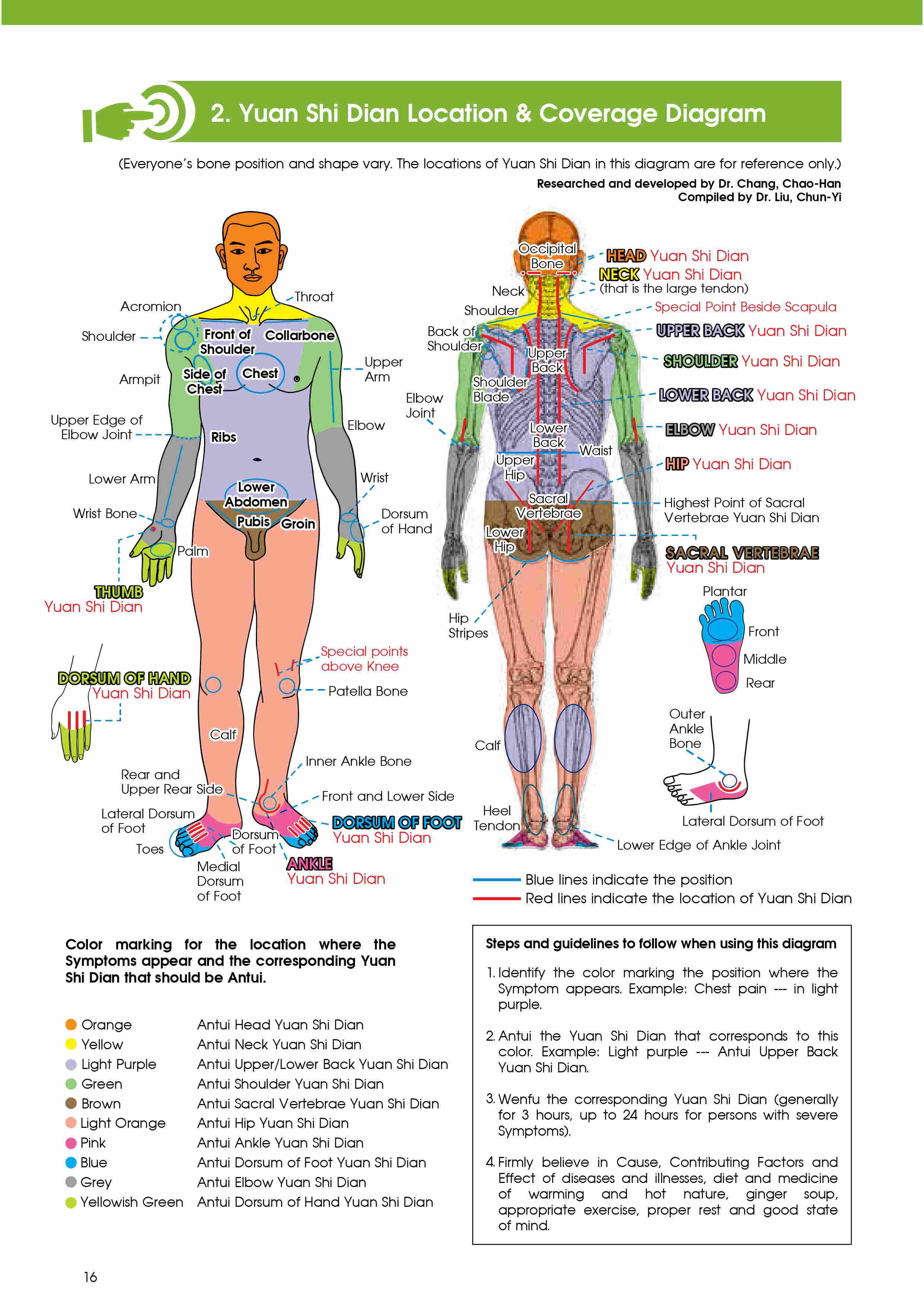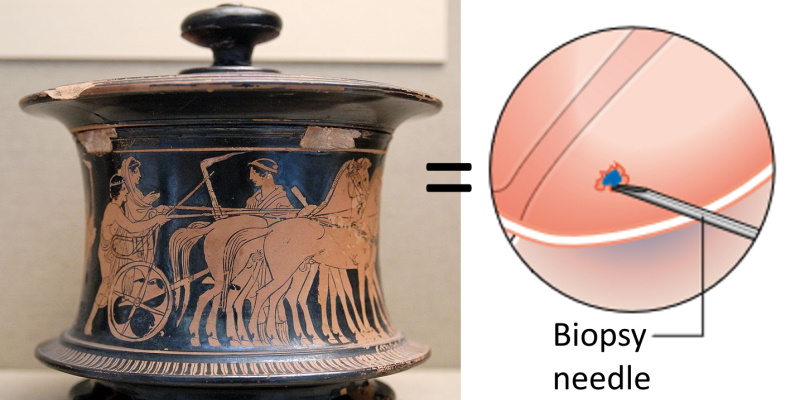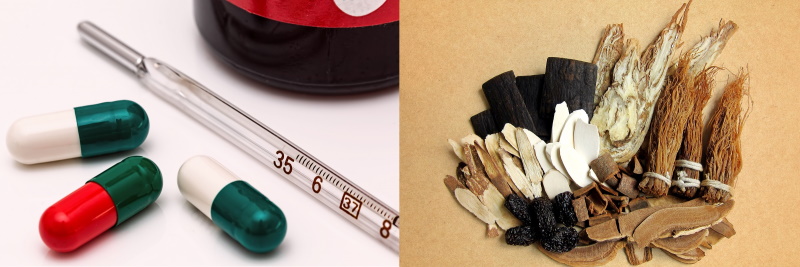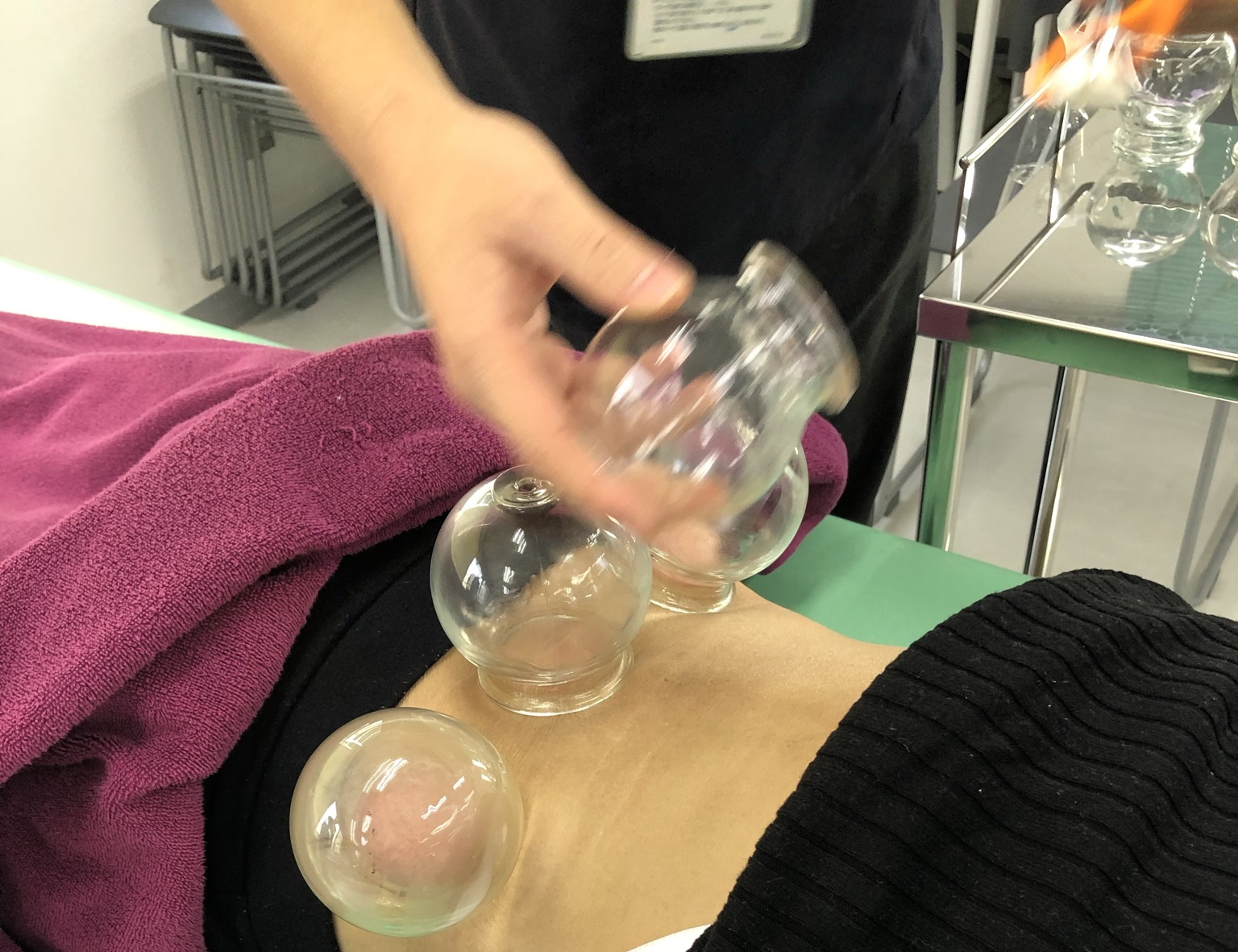Everyone is a Doctor: Yuan Shi Dian Therapy Treats All Diseases
- Details
- Written by Administrator
- Category: Chinese Medicine
- Hits: 19939
2020/12/18
Origin of Yuan Shi Dian Therapy
Yuan Shi Dian (原始點, "Origin Point") therapy was created by the Chinese physician, Chao Han Chang. About 20 years ago, his wife suffered from breast cancer. After surgery, the cancer recurred and metastasized. Her pain worsened day by day, until even morphine could not control it. While searching for a way to ease her pain, Dr. Chang discovered that massaging her in the groin area relieved pain in the buttocks. He began to realize that one does not treat pain at its site, but rather via other places. He named the places that could be used to relieve pain "Yuan Shi Dian" (origin points). After years of research, he found all the Yuan Shi Dian of the human body and made a map and an instructional video. He released this information freely, for all to share and benefit from.
Read more: Everyone is a Doctor: Yuan Shi Dian Therapy Treats All Diseases
The 6 Basic Signs of Health According to Traditional Chinese Medicine
- Details
- Written by Administrator
- Category: Chinese Medicine
- Hits: 2742
2020/12/15
How Western Medicine Defines Health
How do Chinese and Western medicine define whether or not a person is healthy? Let's start with Western medicine. Western medicine relies heavily upon statistics to calculate the median or average value of a data point about the human body. These numbers define healthy height and weight, body temperature, blood pressure and blood sugar, and counts of red and white blood cells. Therefore, Western medicine upholds the idea that median or average value signifies health. That is, to be like most people is healthy. Western medicine does not define what health is in easily understandable terms. It only defines health relative to numbers observed in a population.
How Traditional Chinese Medicine Defines Health
As Chinese medicine does not rely on instruments, numbers and statistics are mostly absent. The pulse is checked during diagnosis, but the four main components of diagnosis are "seeing, smelling, asking, and cutting." Seeing is comprised of observing a person's appearance and vitality. Smelling is assessing the sounds and smells of the person. Asking is verbal inquiry. Cutting is palpation of the patient's body and pulse.
This article deals with the method of "inquiry" of Chinese medicine. This method is something ordinary people can use to examine and assess their own health.
Read more: The 6 Basic Signs of Health According to Traditional Chinese Medicine
Dr. Haixia Ni's "The Curse of Pandora's Box" Inspired Me to Study Chinese Medicine
- Details
- Written by Administrator
- Category: Chinese Medicine
- Hits: 60493
2020/12/11
I became interested in studying Chinese medicine in 2007 after reading an article by Dr. Haixia Ni. This interest grew into a desire to make Chinese medicine my lifelong career.
The title of his article is "The Curse of Pandora's Box," and it is mainly about the danger of testing whether a tumor is benign or malignant via a biopsy. He begins
We use Pandora’s box in Western fairy tales as a metaphor.
.... Suppose there is such a black box in every human body. It is not allowed to be opened. Once opened, the person will die quickly...
Read more: Dr. Haixia Ni's "The Curse of Pandora's Box" Inspired Me to Study Chinese Medicine
Differences in the Treatment of the Common Cold: Western Medicine v. Chinese Medicine
- Details
- Written by Administrator
- Category: Chinese Medicine
- Hits: 48057
2020/12/5
The medical care we choose reflects our understanding of disease and our attitude towards the body and life. In many aspects, Chinese medicine and Western medicine treat diseases in completely different ways. We should understand the nature of different diseases and choose medical treatments carefully.
Treatment of the Common Cold Using Western Medicine
Mainstream Western medical doctors deal with common colds as follows. If you have a runny nose, chills, or fever, the doctor takes your temperature. After a simple consultation, he prescribes some Western medicine. The purpose of these Western medicines is not to treat your illness, but to suppress the symptoms and make you feel more comfortable. This is because Western medicine has no drugs that are effective against all strains of quickly-mutating viruses, such as the common cold and influenza.
Read more: Differences in the Treatment of the Common Cold: Western Medicine v. Chinese Medicine
Acupuncture and Moxibustion College Preparation Course
- Details
- Written by Administrator
- Category: Learning Acupunture in Japan
- Hits: 1747
2020/11/29
Background
I am a Chinese Medicine doctor from Taiwan. I moved to Japan and have been accepted to a college of acupuncture and moxibustion. The school's name is Japan Judo Therapy, Acupuncture & Moxibustion Therapy College.
Before classes start in April, the school has arranged several preparatory courses. I have already attended an anatomy class combined with practical experience performing judo therapy technique and acupuncture. Today's course is about cosmetic acupuncture.
Cosmetic Acupuncture
After checking in, I go to the practice room. Each student lays down on a bed and waits for the teacher's help. Ms. Aoki is good at the "horizontal needle method" of cosmetic acupuncture, where needles enter the dermis to stimulate and activate dermal cells.
Read more: Acupuncture and Moxibustion College Preparation Course






